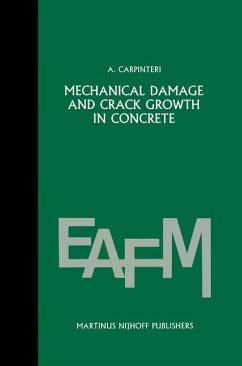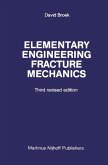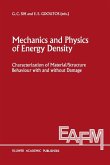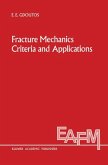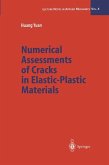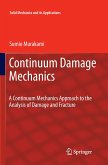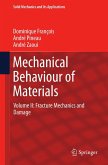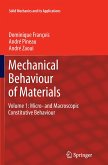`... extremely useful to researchers involved in the nature of cracks through granular materials.' -- Zentralblatt für Mathematik und ihre Grenzgebiete/Mathematical Abstracts, Vol. 635.
Following Volumes III and IV that dealt with the fracture mechanics of concrete emphasizing both material testing and structural application in general, it was felt that specimen size and loading rate effects for concrete require further attention. The only criterion that has thus far successfully linearized the highly nonlinear crack growth data of concrete is the strain energy density theory. In particular, the crack growth resistance curves plotting the strain energy density factor versus crack growth known as the SR·curves are straight lines as specimen size and loading steps or rates are altered. This allows the extrapolation of data and provides a useful design methodology. This book is unique in that it is devoted specifically to the application of the strain energy density theory to civil engineering structural members made of concrete. Analyzed in detail is the strain softening behavior of concrete for a variety of different components including the influence of steel reinforcement. Permanent damage of the material is accounted for each increment of loading by invoking the mechanism of elastic unloading. This assumption is justified in concrete structures where the effective stiffness depends primarily on the crack growth rate and load history. Crack growth data are presented in terms of SR-curves with emphases placed on scaling specimen size which alone can change the mode of failure from plastic collapse to brittle fracture. Loading rate effects can also be scaled to control failure by yielding and fracture.
Hinweis: Dieser Artikel kann nur an eine deutsche Lieferadresse ausgeliefert werden.
Following Volumes III and IV that dealt with the fracture mechanics of concrete emphasizing both material testing and structural application in general, it was felt that specimen size and loading rate effects for concrete require further attention. The only criterion that has thus far successfully linearized the highly nonlinear crack growth data of concrete is the strain energy density theory. In particular, the crack growth resistance curves plotting the strain energy density factor versus crack growth known as the SR·curves are straight lines as specimen size and loading steps or rates are altered. This allows the extrapolation of data and provides a useful design methodology. This book is unique in that it is devoted specifically to the application of the strain energy density theory to civil engineering structural members made of concrete. Analyzed in detail is the strain softening behavior of concrete for a variety of different components including the influence of steel reinforcement. Permanent damage of the material is accounted for each increment of loading by invoking the mechanism of elastic unloading. This assumption is justified in concrete structures where the effective stiffness depends primarily on the crack growth rate and load history. Crack growth data are presented in terms of SR-curves with emphases placed on scaling specimen size which alone can change the mode of failure from plastic collapse to brittle fracture. Loading rate effects can also be scaled to control failure by yielding and fracture.
Hinweis: Dieser Artikel kann nur an eine deutsche Lieferadresse ausgeliefert werden.
`... extremely useful to researchers involved in the nature of cracks through granular materials.'
Zentralblatt für Mathematik und ihre Grenzgebiete/Mathematical Abstracts, Vol. 635.
Zentralblatt für Mathematik und ihre Grenzgebiete/Mathematical Abstracts, Vol. 635.
`... extremely useful to researchers involved in the nature of cracks through granular materials.'
Zentralblatt für Mathematik und ihre Grenzgebiete/Mathematical Abstracts, Vol. 635.
Zentralblatt für Mathematik und ihre Grenzgebiete/Mathematical Abstracts, Vol. 635.

